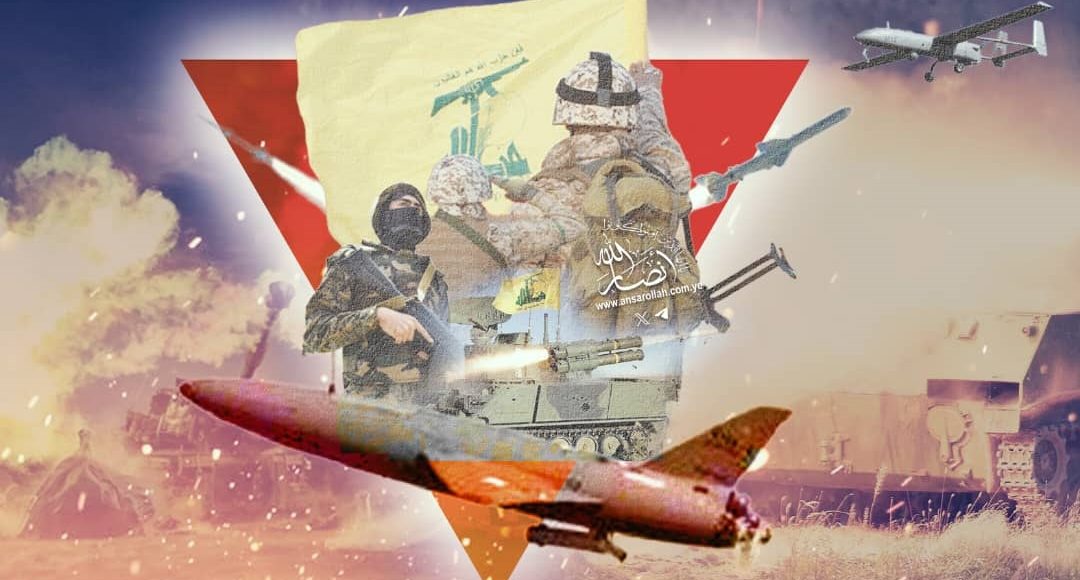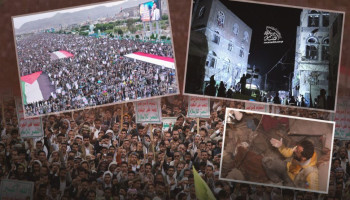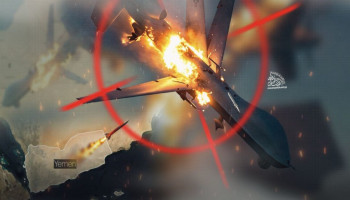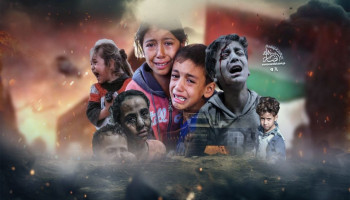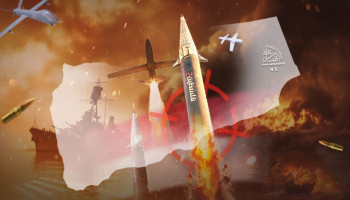The Islamic Resistance in Lebanon is actively working to counter the aggressive Zionist aerial pressure campaign on Lebanon. This campaign aims to push through for a ceasefire agreement on their own terms, but Hezbollah seeks to strip it of its objectives. In response, Hezbollah has escalated its counterattacks, using the pain strategies and "Khaybar Operations," in a comprehensive plan for the confrontation with the Israeli enemy.
On Saturday, the Islamic Resistance in Lebanon carried out numerous military operations against Zionist forces, striking both deep within Israeli territory and along the shared borders with occupied Palestine. The Resistance issued 26 military statements detailing the attacks, which targeted military bases, settlements, and concentrations of Israeli soldiers in occupied Palestine and around Lebanese villages on the border. The details are as follows:
Military Bases and Khaybar Operations
A series of assault drones and ten rocket salvos, including precision-guided missiles, struck numerous Israeli military bases and command centers. The attacks reached 11 key sites, including repeated strikes on the headquarters of the 769th Infantry Battalion of the Eastern Brigade in the Ramim Garrison, and the Shiraga base, the administrative center of the Golani Brigade, north of occupied Acre. Additionally, Hezbollah targeted the Ajal Hill outpost north of Kfar Yuval.
As part of the Khaybar Operations, Hezbollah attacked seven military bases up to 40 kilometers from the Lebanese-Palestinian border. One significant target was the strategic Stella Maris Naval Base, 35 kilometers northwest of Haifa, used for coastal surveillance. Another target was the Shayetet 13 naval commando base in Atlit, south of Haifa, where assault drones scored precise hits.
A major synchronized assault occurred at 7:45 PM Beirut time, targeting five bases, some for the first time. These were:
- Haifa Technical Base: An air force facility with a training school for air force technicians, 35 kilometers east of Haifa.
- Haifa Naval Base: Home to missile boats and submarines, 35 kilometers north of Haifa.
- Stella Maris Base: The strategic naval monitoring post, 35 kilometers northwest of Haifa.
- Tirat Carmel Base: Logistics and transport center for the northern region, 40 kilometers south of Haifa.
- Nesher Base: Struck for the first time, this site contains a military gas station, 40 kilometers southeast of Haifa.
Targeting Enemy Troop Concentrations
Hezbollah also launched 16 operations against concentrations of Israeli forces, with four occurring near the border and 12 in northern occupied Palestine. The attacks targeted locations such as the newly established Western Brigade headquarters in the Yaarah Garrison, as well as troops at the Dovev Garrison and in settlements like Avivim, Menara, Sa’sa’, Kiryat Shmona, Margaliot, and Ramim Garrison. These were struck by rocket salvos and assault drones, which hit their targets with precision.
Along the border strip, Hezbollah bombarded a gathering east of Maroun al-Ras and launched three separate strikes on Israeli forces near the eastern outskirts of Markaba and Shama. Additionally, Hezbollah destroyed a Merkava tank near Shama with a guided missile, setting it ablaze and causing casualties among the crew.
Strikes on Northern Settlements
In line with its earlier warnings, Hezbollah launched rocket barrages at northern Israeli settlements, including Qatsrin and Kiryat Shmona.
Haifa: A Central Target
A review of Saturday’s operations, alongside previous days, shows that Haifa has become a major focus, similar to Kiryat Shmona. The attacks encircled Haifa, striking from the north, south, east, and west. While Hezbollah continues to focus on military installations, the resulting impact on Haifa’s economy and security is undeniable. The so-called mayor of Haifa lamented the deteriorating economic situation and the ongoing evacuation of settlers, with the city under continuous rocket fire from Hezbollah. Israeli media reported that 450,000 settlers have fled Haifa and its surroundings, a departure that illustrates a strain on the city.
Demonstrating Strategic Missile Capabilities
Hezbollah’s operations underscore a formidable arsenal and precise strategic planning. Despite intense Israeli airstrikes on Beirut’s southern suburbs, Hezbollah has maintained a disciplined focus on military targets. This strategic choice highlights the group’s preparedness and the depth of its target bank, compared to the dwindling options left for Israel, which has exhausted military targets accumulated over 18 years.
Military Escalation Amid Negotiations
The United States recently presented a ceasefire proposal, but Hezbollah and the Lebanese negotiators have not fully accepted its terms. This is logical, given that negotiations rarely satisfy all parties, and Washington acts not as a neutral mediator but as a partisan supporter of Israeli demands.
In response to the Zionist entity’s widening attacks from southern Lebanon to the Beqaa Valley and Beirut’s southern suburbs, Hezbollah has expanded its own rocket fire under the Khaybar Operations and issued new warnings to northern settlements. Despite Israeli strikes on civilian structures, Hezbollah remains focused on military objectives, reflecting its strategic capacity and holding back significant reserves for future engagements.
Resilient Military Capabilities
Hezbollah’s sustained and intensifying operations reveal the group's robust and diverse military arsenal. Zionist claims of significant damage to Hezbollah’s weaponry have proven to be mere propaganda, as the Resistance continues to show its readiness for prolonged conflict. Hezbollah’s actions confirm that it retains extensive strategic resources and can maintain pressure on the Israeli entity's military far longer than anticipated. As the confrontation continues, Hezbollah appears determined to leverage its capabilities to counter Israeli aggression effectively, maintaining a strategic upper hand.

